When folks think about trekking in Nepal, they often picture the bustling routes of Everest or Annapurna, but Mardi Himal Trekking‘s got a charm all its own. This lesser-known gem takes trekkers through serene landscapes and quaint villages, letting them soak in local culture and enjoy delicious Nepali dishes. With well-marked trails and cozy teahouses, it’s perfect for those looking to escape the crowds. But before anyone laces up those hiking boots, there are a few essential tips and insights that could make all the difference on this unforgettable journey. Curious about what to pack?
Key Points
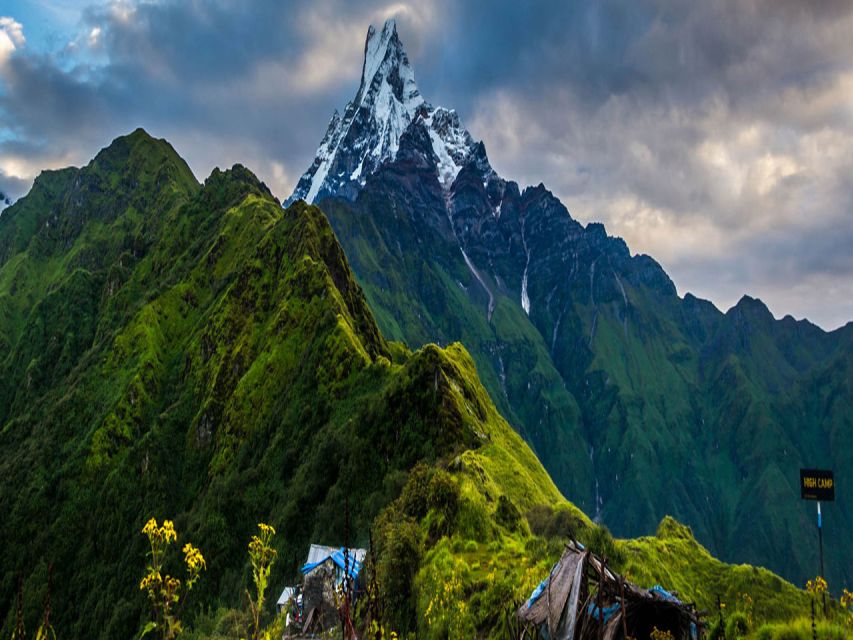
- Mardi Himal Trekking is located in Nepal’s Annapurna region, featuring less crowded trails for a peaceful hiking experience.
- The trek offers a manageable duration of ten days, with stunning views and cultural interactions with local communities.
- Accommodation is provided in cozy teahouses, along with an experienced guide and porter service for support.
- Ideal trekking seasons are spring (March to May) and autumn (September to November) for the best weather and cultural experiences.
- Essential packing includes sturdy hiking shoes, a good sleeping bag, and travel insurance for safety during the trek.
It's also worth checking out some other tours and experiences nearby.
Overview of Mardi Himal Trekking
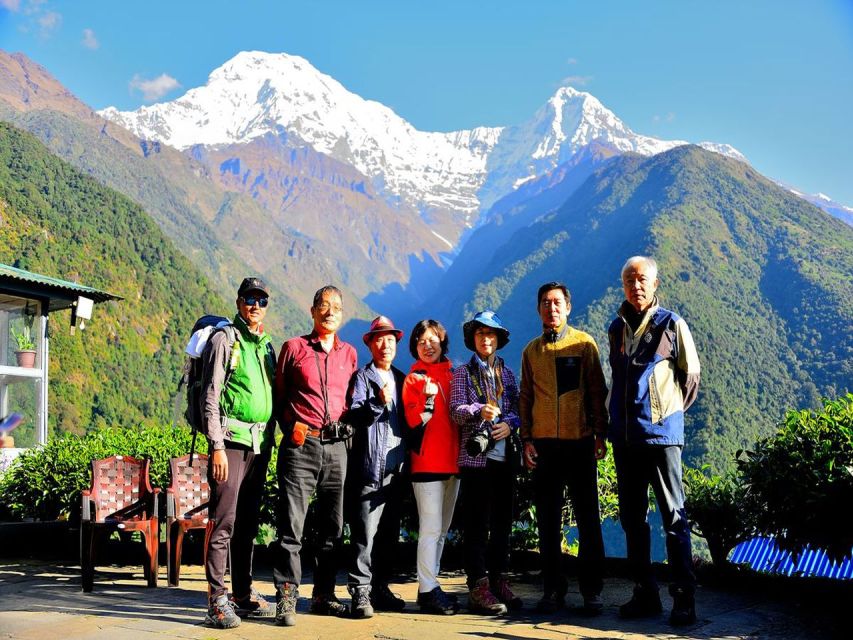
The Mardi Himal Trekking experience takes adventurers through the breathtaking Annapurna region of Nepal, offering a perfect blend of stunning landscapes and the warm hospitality of local Gurung and Magar communities.
This trek’s less crowded routes let trekkers savor the beauty without the hustle and bustle found in more popular areas. Along the way, travelers can explore terraced fields and vibrant villages, gaining insights into the rich culture and traditions of the locals.
It’s a fantastic opportunity to taste authentic Nepali cuisine, too! For those looking to escape the crowds while still enjoying breathtaking views, Mardi Himal is a gem.
Plus, with a trek duration of just ten days, it’s a manageable adventure for most!
Detailed Itinerary
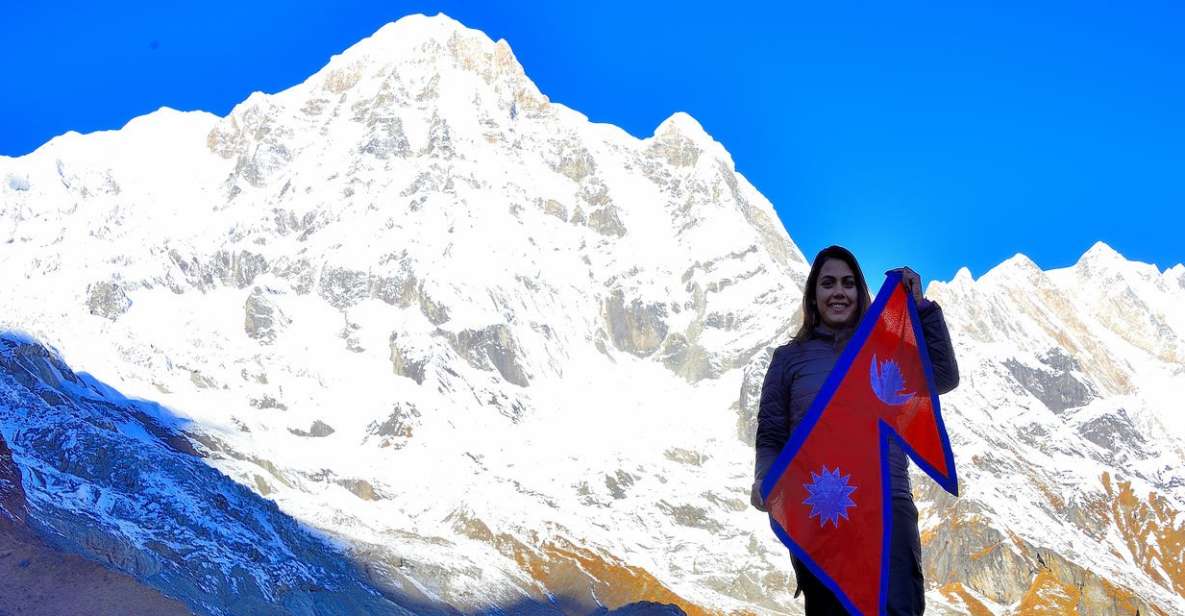
Kicking off the Mardi Himal Trek, adventurers will first find themselves in Kathmandu, where they can soak up the vibrant atmosphere of Thamel before heading out on their trekking journey. The trek spans ten days, showcasing breathtaking landscapes and welcoming local cultures.
Here’s a snapshot of the itinerary:
| Day | Location | Altitude |
|---|---|---|
| Day 1 | Kathmandu | 1,400m |
| Day 5 | High Camp | 3,580m |
| Day 6 | Siding Village | 1,700m |
On each day, trekkers experience a mix of stunning views and warm interactions with the Gurung and Magar communities. It’s essential to stay hydrated and enjoy the local cuisine along the way!
What’s Included in the Trek
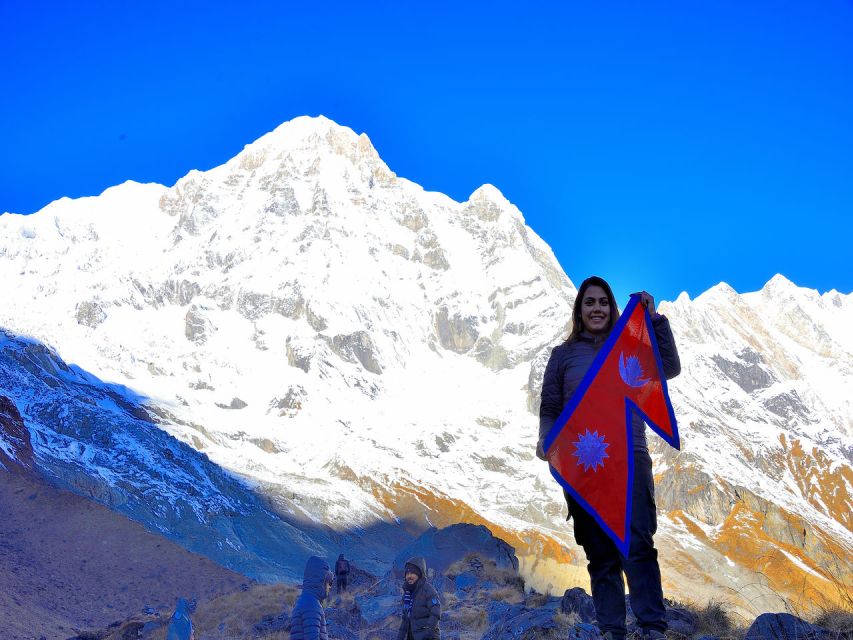
Trekking the Mardi Himal offers a fantastic value with a range of inclusions that enhance the experience, from airport transfers to delicious meals along the trail.
Travelers can expect comfortable accommodation in cozy teahouses, where the warm hospitality of the Gurung and Magar communities shines through.
An experienced English-speaking guide helps navigate the stunning landscapes and shares cultural insights, making every step more enriching. Plus, a porter service is included—one porter for every two trekkers, easing the load.
Important trekking permits and the TIMS card are also taken care of, along with a first aid kit for peace of mind.
What’s Not Included
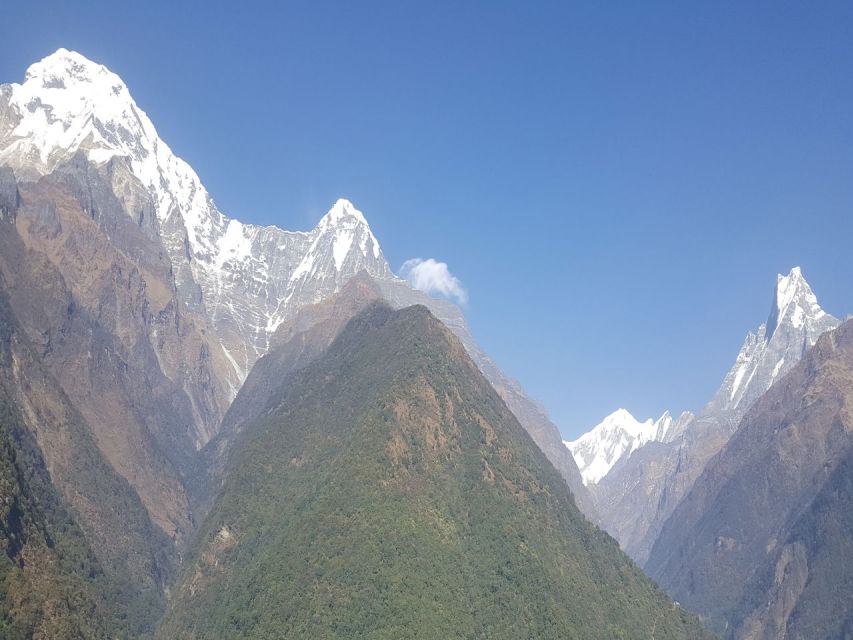
While the Mardi Himal trek includes plenty of great perks, there are a few key expenses that travelers need to cover on their own.
First up, international airfare isn’t included, so budget for flights to Nepal.
You’ll also need to sort out your Nepalese visa fee, which is easy to get on arrival but can add up.
Travel insurance is a must, too—don’t skip this for peace of mind.
Meals in Kathmandu, except breakfast, are on you, so explore local eateries!
Personal trekking gear like hiking shoes and sleeping bags aren’t supplied, so pack wisely.
Lastly, remember to set aside some cash for tips and gratuities for your guide and porter; a little goes a long way in expressing gratitude.
Important Trekking Information
When planning the Mardi Himal adventure, it’s essential to keep in mind the unique challenges and cultural nuances of the Annapurna region.
Trekkers should prepare themselves for rugged terrain and altitude changes, which can be tough. It’s also a good idea to embrace the local culture, as the Gurung and Magar communities are welcoming and eager to share their traditions.
Here are some key points to consider:
-
Acclimatization is crucial, so pace yourself.
-
Respect local customs and dress modestly.
-
Always carry enough cash, as ATMs can be scarce.
-
Be ready for changing weather; layers are your best friend!
Essential Packing List
Packing for the Mardi Himal Trek means gearing up with the right essentials to tackle the adventure ahead while enjoying the rich culture of the Gurung and Magar communities along the way.
First off, don’t forget your passport and travel insurance—it’s a must!
A good sleeping bag, sturdy hiking shoes, and a reliable jacket with gloves will keep you comfortable.
Sunscreen and sunglasses are essential for those sunny days in the mountains.
Pack some hiking pants, toiletries, cash for local expenses, and a camera to capture the stunning views.
Lastly, a first aid kit can be a lifesaver.
With this packing list, trekkers can focus on the breathtaking landscapes and warm hospitality without worrying about missing essentials!
Cultural Insights
Trekking through the Mardi Himal region not only offers breathtaking views but also immerses adventurers in the vibrant cultures of the Gurung and Magar communities, where traditions are deeply woven into daily life.
Travelers will find warm hospitality and rich cultural experiences.
-
Share a cup of local tea with villagers.
-
Witness traditional dance performances during festivals.
-
Explore ancient temples and learn about local beliefs.
-
Savor delicious homemade meals featuring local ingredients.
Getting to know the locals adds depth to the trek. They often share stories of their ancestry and customs, making each step more meaningful.
Respecting their way of life enhances the journey, creating unforgettable memories that go beyond just the stunning landscapes.
Best Time to Trek
The ideal time to experience the Mardi Himal Trek is during the spring and autumn seasons, when the weather is mild, the trails are clear, and the breathtaking views are at their best.
Spring, from March to May, showcases vibrant rhododendron blooms, making the trek a colorful delight.
Autumn, between September and November, offers crystal-clear skies and pleasant temperatures.
Trekking during these times not only means better weather but also a chance to experience local festivals, adding a cultural touch to the adventure.
While winter can be chilly and summer monsoons bring rain, sticking to spring and autumn ensures a more enjoyable trek.
Here's a few more nearby tours and experiences we think you'll like.
Frequently Asked Questions
What Is the Difficulty Level of the Mardi Himal Trek?
The trek’s difficulty level is moderate. It involves steep ascents and descents, but with a reasonable fitness level, most folks can enjoy the stunning views and warm local culture without too much struggle.
Are There Any Age Restrictions for This Trek?
They can’t take part if they’re under 18 or over 95. It’s crucial to check health conditions before embarking, since age might affect stamina and overall trekking experience. Always consult with a doctor beforehand.
Can I Trek Solo or Do I Need a Guide?
He can’t trek solo; a guide’s required. Local guides not only navigate trails but also share culture and stories, enriching the experience. Plus, they ensure safety in Nepal’s rugged terrain. It’s a smart choice!
Is Acclimatization Necessary During the Trek?
Acclimatization’s crucial during high-altitude treks. It helps trekkers adjust to reduced oxygen levels, preventing altitude sickness. Taking it slow and listening to your body’s signals can make a huge difference in enjoying the journey.
Are There ATMS Available Along the Trekking Route?
There aren’t ATMs along the trekking route, so they should bring enough cash. Locals appreciate the effort, and it’s a great way to support the community. Plus, it adds to the adventure!
Not for you? Here's more of our most recent tour reviews happening neaby
- Mount Everest Sightseeing Flight and Kathmandu Heritage Tour
- Kathmandu: 7 Days Ghorepani Poonhill & Ghandruk Private Trek
- From Kathmandu: 2 Night 3 Days Kalinchowk Snow Trek
- Pokhara: Mardi Himal Base Camp Helicopter Tour
- Everest Mountain Flight
- Kathmandu: 6 Day Langtang Valley Trek Fixed Group Departure
- Kathmandu: 6-Day Pikey Peak Guided Trek
- From Kathmandu to Chitwan: Jungle Safari + Meals & Transport
- Lumbini Tour: A 3-Day Pilgrimage to the Birthplace of Buddha
- Langtang Valley Trek: a 6-Day Adventure From Kathmandu
- From Kathmandu: 1 Hour Everest Mountain Flight
- Pikey Peak Trek – 5 Days
- Gosaikunda Trek 7 Day: A Journey to the Sacred Alpine Lakes
- Pokhara: 3-Day Adventure and Scenic Exploration Tour
- Kathmandu : 7 Day Annapurna Base Camp Trek
Recap
In summary, Mardi Himal Trekking is a fantastic choice for anyone looking to explore Nepal’s stunning landscapes without the usual crowds.
With its blend of breathtaking views, rich culture, and delicious food, trekkers can truly connect with the heart of the Annapurna region.
Whether you’re soaking in the mountain vistas or chatting with locals, this trek promises unforgettable memories.
So grab your gear, lace up those hiking boots, and get ready for an adventure of a lifetime!
